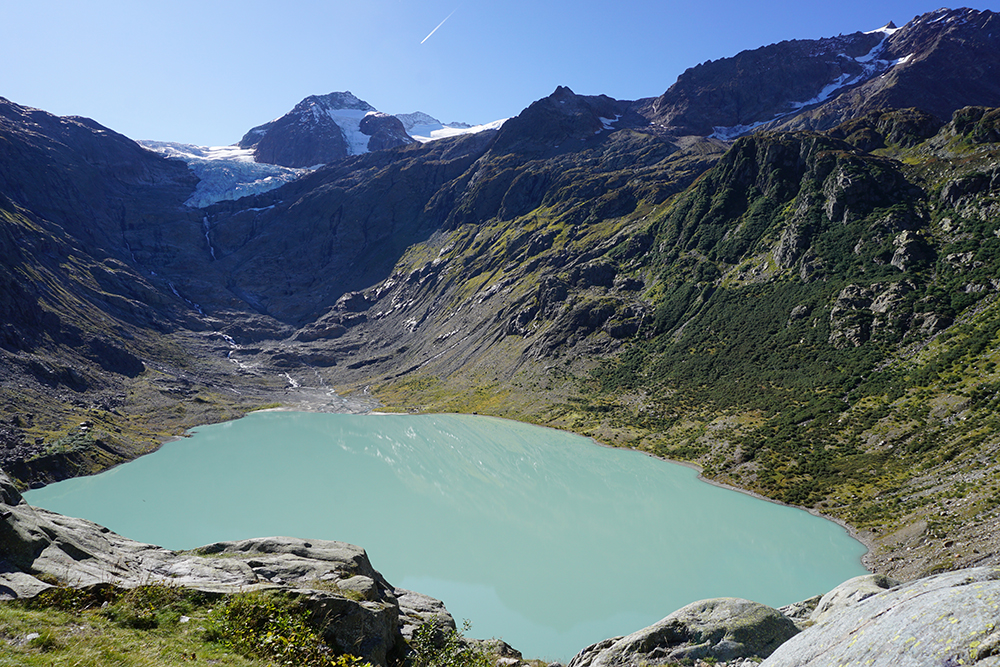Research published in the journal Earth’s Future assesses the governance processes related to the planning of a new reservoir in the European Alps – and stresses that reservoir governance in mountain regions would profit from anticipating multi-purpose use in a way that addresses both climate change mitigation and adaptation.
Mountains – often referred to as the world’s ‘water towers’ – play an essential role in storing water and providing it to meet the downstream water demands of a significant proportion of the global population. This role is of particular importance during lowlands' low flow season, where mountains provide runoff through snow- and glacier melt. 1.9 billion people worldwide depend upon these runoff contributions for purposes including drinking water, irrigation, energy production, and industrial and municipal activities. Furthermore, this runoff is essential for ecosystems and biodiversity. The retreat of glaciers, rising snow lines, and changes in precipitation as a result of climate change, both now and in future, therefore have serious implications.
So how can this pressing challenge be addressed? One potential strategy to jointly address mitigation and adaptation challenges is the construction of new water reservoirs or the adjustment of current reservoir management strategies. Mountain reservoirs can be operated for multiple services by producing hydropower (mitigation) and by storing water temporarily in wet periods and managing runoff in dry periods (adaptation). However, as a recent research article published in the journal Earth’s Future shows, these strategies need to account for various water uses originating from sectors and governments with different interests and values – the successful balancing of which has proved to be difficult to achieve.
A Crisis of Governance
“Like many other researchers, I am convinced that the global water crisis is a crisis of governance, which is expected to become more critical in the near future,” says lead author Elke Kellner, a postdoctoral researcher at the Swiss Federal Institute for Forest, Snow and Landscape Research WSL. “For decades, studies have suggested increasing cross-sectoral coordination in water governance and using Integrated Water Resource Management, but this has mostly failed. This current study is motivated to go beyond cross-sectoral suggestions and to diagnose the drivers and patterns of coordination gaps and water conflicts. It seeks to understand in depth the factors which influence collective decision-making on water uses.”
The study assesses the governance processes related to the planning of a future reservoir in the Trift region of the Swiss Alps. This region has experienced significant glacier retreat and lies in the upper part of the Rhine basin, which is a crucial source of water for the middle and lower reaches thereof, particularly during the summer low‐flow season.
As part of their assessment, article co-author Manuela I. Brunner, Lecturer at the University of Freiburg’s Chair of Environmental Hydrological Systems, conducted a water resources analysis that showed the water available in the Trift reservoir would be sufficient to cover a substantial proportion of current and future downstream water shortages – even, partially, under extremely low inflow conditions. However, despite this potential the researchers found that multi‐purpose use, including downstream water shortage alleviation, was not taken into account when the concession for the Trift reservoir was negotiated via a broad participatory process. Four main factors influenced the decision-making process: 1) a lack of knowledge, awareness, and available data regarding future downstream water shortages and potential reservoir‐management options for multi‐purpose use, (b) a strong interest in increasing renewable energy production, (c) a focus on environmental agreements, and (d) economic interests, e.g., driven by subsidies.
Difficult Trade-Offs
In order to improve reservoir governance processes and prevent important hydrological conditions from being neglected in future decision-making, the researchers highlight the need to focus on the problem of assigning responsibility for tackling trade‐offs between upstream and downstream water needs, and identifying synergies between climate change mitigation and adaptation.
“The strategy to increase artificial water storage capacity in mountain regions in order to jointly address mitigation (production of renewable energy) and adaptation challenges (to ensure downstream water security) has become highly relevant globally due to climate change,” says Kellner. “However, strategies for supply augmentation need necessarily to be coupled with demand-side management. Otherwise, they will face the paradox that an increasing water supply results in higher water demand and consequently offsets the original benefits of reservoirs.”
Against this background, Kellner emphasizes “that reservoirs are part of complex social–ecological systems with co-evolutionary processes of social (e.g., institutions, governance processes), natural (water and associated natural resources), and technical (e.g., infrastructures) elements.” In a recently published opinion paper (Kellner, 2021), she discusses how the neglect of interactions between these elements could lead to biased research agendas, misleading conclusions, and adverse effects on the transformation process towards sustainability.
“Future research therefore needs to foster a ‘deep diagnosis’ of collective decision-making in water governance systems facing trade-offs to promote equitable and ecologically sustainable access to and use of water,” Kellner concludes.
Read More
Kellner, Elke; Brunner, Manuela I. (2021): ‘Reservoir governance in world’s water towers needs to anticipate multi-purpose use.’ Earth’s Future 9, e2020EF001643. DOI: 10.1029/2020EF001643
Kellner, Elke (2021): ‘The controversial debate on the role of water reservoirs in reducing water scarcity.’ WIREs Water, e1514. DOI: 10.1002/WAT2.1514.
Cover Image: The natural lake in front of the retreating Trift glacier in the Swiss Alps, where a new hydropower reservoir is planned. Photo by Elke Kellner.






